The Xiaomi Mi Note Pro and Mi Note Review
by Joshua Ho on September 11, 2015 9:00 AM EST
Xiaomi has been a significant part of the Android ecosystem for a number of years - even before they had ever launched a phone, they were already getting some level of attention from XDA-Developers and other custom ROM communities in the form of ports for MIUI. The launch of the Mi1 smartphone went almost unnoticed in places like the US, and compared to something like the Galaxy S2 at the time there wasn’t all that much to be amazed by other than price. However, the launch of the Mi2 was notable as it was the first smartphone to launch with Qualcomm’s Snapdragon S4 Pro with quad core Krait CPU and Adreno 320 GPU. Although the baseline specifications of the phone were amazing, the truly incredible part was the price at 1999 RMB or 315 USD at the time. The Xiaomi Mi line has continued to develop, with high end hardware at a mid-range price. In the past 4 years, we've continued to notice how Xiaomi seems to always follow this same pattern. This brings us to the Xiaomi Mi Note Pro and Mi Note, which represent Xiaomi’s attempt to conquer the phablet market with this formula.
The Mi Note and Mi Note Pro have the same industrial design (dimensions, weight), but differ in specifications to represent different price bands of product. They weigh in as follows:
Xiaomi Mi Note |
Xiaomi Mi Note Pro |
|
| SoC | MSM8974AC Snapdragon 801 4x Krait 400 @ 2.5 GHz |
MSM8994 Snapdragon 810 4xA57 @ 2GHz 4xA53 @ 1.5GHz |
| GPU | Adreno 330 @ 578MHz | Adreno 430 @ 600MHz |
| RAM | 3GB LPDDR3 933MHz | 4GB LPDDR4 1555MHz |
| NAND | 16/64GB eMMC | 64GB eMMC |
| Display | 5.7-inch 1920x1080 IPS LCD | 5.7-inch 2560x1440 IPS LCD |
| Network | 2G / 3G / 4G Qualcomm MDM9x25 IP UE Category 4 LTE |
2G / 3G / 4G Qualcomm X10 (Integrated) UE Category 6/9 LTE |
| Dimensions | 155.1 x 77.6 x 6.95 mm 161 grams |
155.1 x 77.6 x 6.95 mm 161 grams |
| Camera | 13MP Sony IMX214 rear camera, 1.12 µm pixels, 1/3.06" CMOS size, F/2.0. OIS 4MP F/2.0 FFC OmniVision OV4688 |
13MP Sony IMX214 rear camera, 1.12 µm pixels, 1/3.06" CMOS size, F/2.0. OIS 4MP F/2.0 FFC OmniVision OV4688 |
| Battery | 3000 mAh (11.4 Wh) replaceable | 3090 mAh (11.74 Wh) replaceable |
| OS | Android 4.4 with MIUI 6 (At launch) | Android 5.0 with MIUI 6 (At launch) |
| Connectivity | 802.11a/b/g/n/ac + BT 4.1, USB2.0, GPS/GNSS, WiFi Display | 802.11a/b/g/n/ac + BT 4.1, USB2.0, GPS/GNSS, WiFi Display |
| SIM Size | 1x NanoSIM/1x MicroSIM | 1x NanoSIM/1x MicroSIM |
| Launch Price | 2300 RMB for 16GB (~$360) 2800 RMB for 64GB (~$439) |
3000 RMB for 64GB (~$470) |
Immediately, we can see that the Mi Note Pro is clearly targeted for a more high-end audience than the Mi Note, as the Mi Note Pro has a higher resolution 1440p display along with a more expensive Snapdragon 810 SoC and 4GB of RAM. The Mi Note by comparison has a 1080p display, Snapdragon 801 SoC, and 3GB of RAM to make the device cheaper. Both have the same design, dimensions, cameras, battery (90 mAh difference in favor on the Pro), and various other high level specs. The Mi Note Pro at a high level is par for the course for high end smartphones. At 299 RMB/470 USD, it noticeably undercuts other flagships in this category by about 230 dollars or more.
Design
As always, one of the most immediate things about any smartphone will always be the design. Even before you turn the phone on, it’s possible to form an opinion about how a phone feels ergonomically. Going even further, just looking at a device render or some press photos is often enough for people to start forming opinions about the industrial design of a phone or tablet. In many ways, this is one of the most important parts of any device though, as poor design can make a device unbearable to use. In the case of the Mi Note and Mi Note Pro, which both share the same chassis, we see a significantly evolved version of the Mi4 design.
Starting from the front of the phone, this lineage is clear. The top left side of the phone has the Xiaomi logo, which seems to be a staple of Xiaomi phones. The earpiece is slightly sunk into the glass, with a proximity/ambient light sensor directly above it, and the front facing camera to the right of the earpiece. The vast majority of the front face is display, but the capacitive buttons are directly below the display. Like all of their previous phones, these buttons are menu/home/back, but in the case of the Mi Note and Mi Note Pro the menu button is actually a multitasking button. Although I suspect that the menu button is kept out of tradition or something similar, Xiaomi should probably change the icon to a multitasking icon to make things less confusing. The edges of the glass that covers almost all of the front face is also rounded at the edges, which means that edge swipes feel smooth and seamless. However, this does affect glass lens durability as drops to the front face of the phone are more likely to shatter the glass lens.
Moving on to the back of the phone, the Mi Note line has a camera and a dual LED flash on the top left of the phone. Other than some logos and regulatory information, this is otherwise just an expanse of glass that curves significantly at the edges. Rather than just curving the top surface like the display glass, the back cover glass has a bend throughout the glass near the left and right edges. This makes for a noticeably more comfortable feel in the hand. However, this basically means that the phone is even closer to all-glass than devices like the Xperia Z3. Combined with the lack of camera hump, this makes the Mi Note line incredibly adept at falling off of flat tables. Out of all the phones I’ve reviewed so far, I don’t think I’ve ever had a phone as prone to sliding off of tables as the Mi Note and Mi Note Pro. I would definitely invest in a thin TPU case or something similar if I were to buy this phone.
Leaving behind the back of the phone, the sides are similar to the Mi4 with an anodized aluminum frame and chamfered edges. The right side has the volume rocker and power button, with the volume rocker above the power button.
The bottom contains the speaker and a microUSB port which is towards the left side of the phone. Although this makes for worse compatibility with various docks and isn’t symmetrical, this helps to improve usability of the phone in landscape when charging.
The left side contains the SIM tray, and the top contains the 3.5mm headphone jack. There’s no IR port here, so there aren’t any particular holes other than ones for microphones.
Overall, I found the design of the Xiaomi Mi Note line to be impressive. Other than the problems that come with slippery glass, I found the design to execute well when it comes to attention to detail. The logo on the front of the device may be a bit much, but I otherwise had no problems with the phone in everyday use. The ergonomics of the device are excellent as the power and volume buttons are appropriately placed and spaced far enough apart that it’s impossible to confuse the two. The curved back glass means that it won’t wobble on a table but also fits well in the hand. A potential improvement I would request here is porting the sound from the speaker from the bottom of the phone to actually point towards the user, and possibly moving the 3.5mm jack to the bottom of the phone.


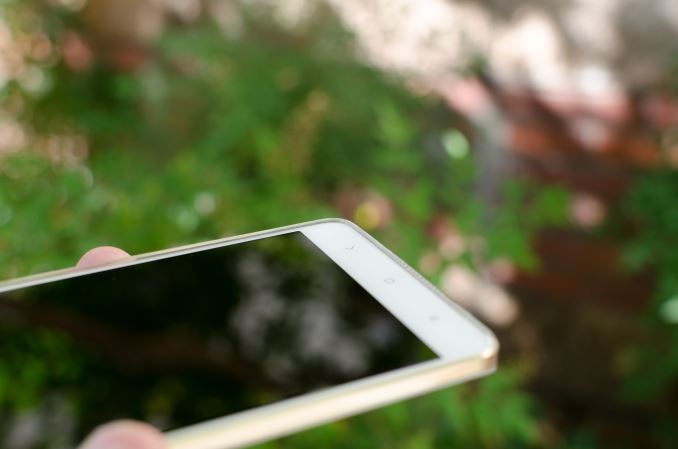
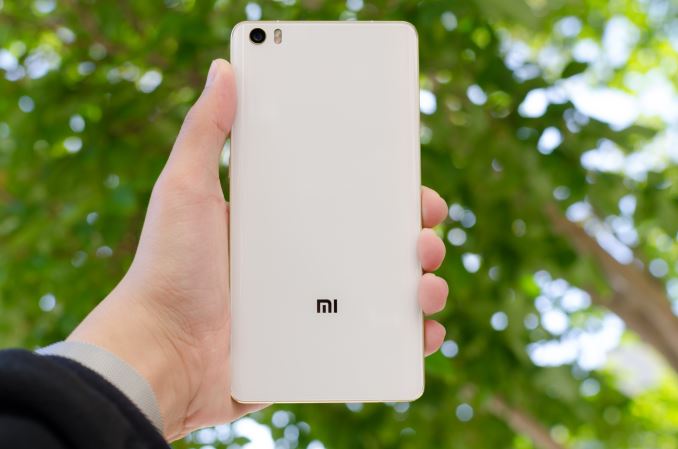
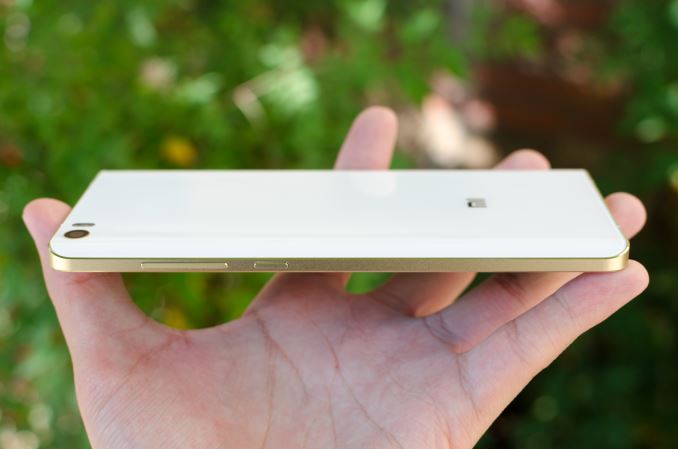
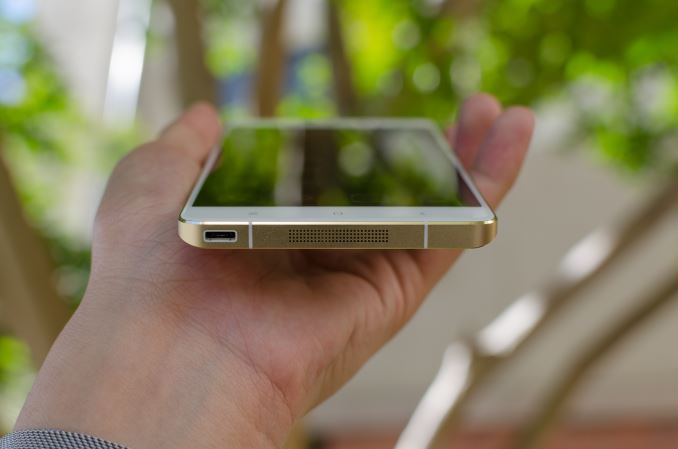
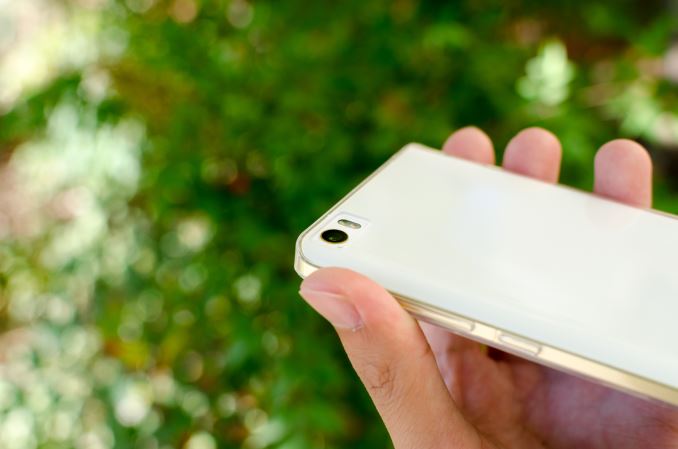
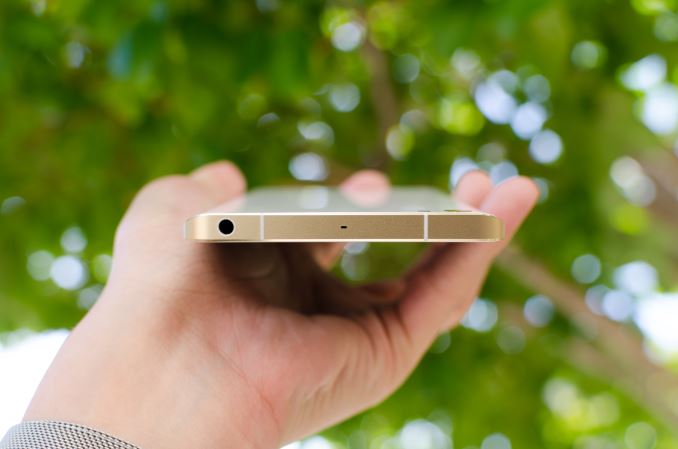








94 Comments
View All Comments
AussieinUS - Monday, September 14, 2015 - link
FYI my Note works in the USA and Canada with my US T-Mobile account. No LTE but HSPA and 3G. The same speeds that I got in Italy where it was purchased. The Bands in the Note is missing for LTE at least in the version I have. I think 1700. Also the slowness to update from Kitkat is a limitation. Overall a great phone and well priced.johnny_boy - Saturday, September 12, 2015 - link
Android 4.4 KitKat? Really? I wouldn't even consider the Note because of this. I have the Honor 6 and it's taking ages for them to bring their first OS update ever to the phone: apparently we got Lollipop late this month, around the time Marshmallow comes out! Definitely the last phone I buy from Huawei.realbabilu - Tuesday, September 15, 2015 - link
don't worry. They re updating the firmware fast. you can choose nightly every week update.I have oneplus that came with Lollipop CM12s still has the 3 stagefreight bugs, Xiaomi miui patched them fast with kitkat firmware.
The Lollipop Cm12s Oneplus is killing batteries faster than Kitkat Cm11s
vision33r - Sunday, September 13, 2015 - link
Note 5 and S6 Edge Plus reviews are everywhere. I've checked them out and they are super fast, I've never used an Android device that smooth and fast before. I definitely think those are the phones to beat in 2015. However I don't want them because like the iPhone 6 they are due to get refreshed next year when Samsung can finally figure out how to get microSD working. I can do without battery swap but I need ext storage.Yaru - Sunday, October 4, 2015 - link
I doubt Samsung will bring back MicroSD storage. They're targeting the high end premium market with those phones and they rather charge you extra money for extra internal storage like Apple does.NXTwoThou - Tuesday, September 15, 2015 - link
*crosses fingers that WM10 will be available for it or its successor*JimmiG - Wednesday, September 16, 2015 - link
Part of the difference in battery life can also be explained by Android 5.0 vs 4.4.4, since KitKat has superior battery life over Lollipop.hasseb64 - Monday, September 21, 2015 - link
Chinese hardware and STASI software, your personal info is SOLD at least two times...ntgeralt - Wednesday, September 23, 2015 - link
Tell you someting you don't know:In permissions management system, It will automatically scan all your files background and "tell" you how much crash you need to clean.And XiaoMi UI will give you ads push everyweek,you can't find anyplace to turn it off.
The last thing is google it: "XiaoMi backdoor".
pintin - Wednesday, September 30, 2015 - link
Yes.An important reason for the unexpected success of the company Xiaomi were designed both hardware and firmware that runs on the open source software of Android. Xiaomi MIUI interface of speed and design equivalent to the operating system of the iPhone or the Samsung's high-end products but with only half the price. Most Android phone vendors are dependent on similar designs by the third party manufacturers like Foxconn provide.